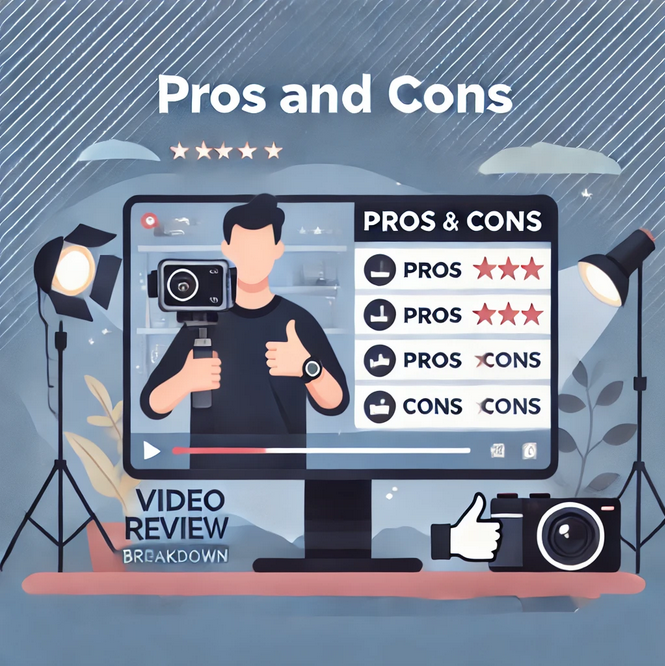In an era where video content reigns supreme, video reviews have become a go-to resource for consumers seeking firsthand information about products and services. These reviews, often shared on platforms like YouTube or social media, provide a dynamic look into how products perform in real-life scenarios. Here, we take an in-depth look at the pros and cons of using video reviews to evaluate products.
Pros of Video Reviews:
- Visual Representation of Products: One of the biggest advantages of video reviews is the ability to see products in action. Unlike written reviews, which only describe features, video content allows viewers to witness how a product looks, operates, and functions in real-time. This visual representation can often answer questions that text reviews might not cover, such as the true size, shape, or material of the item.
- Authenticity Through Unedited Footage: Many video reviews include raw, unedited footage of the product being used, adding a layer of authenticity that can be hard to replicate in text reviews. This can be especially beneficial when reviewers show both the strengths and weaknesses of a product without overly editing out mistakes or malfunctions.
- Demonstrations and Tutorials: Video reviews are often accompanied by demonstrations or tutorials on how to use the product. This is incredibly useful for products that have a learning curve or require setup. Viewers can follow along and decide if the product is user-friendly and suitable for their needs.
- Engagement and Interaction: With video reviews, consumers can engage directly with the reviewer by leaving comments, asking questions, or even requesting follow-up videos. This type of interaction helps clarify doubts and provides a more comprehensive understanding of the product.

Cons of Video Reviews:
- Potential Biases and Paid Endorsements: A significant downside to video reviews is the potential for bias. Some reviewers may receive free products or payment for their reviews, which can influence their opinions. Although many platforms require reviewers to disclose such partnerships, it may still affect the viewer’s ability to trust the content.
- Time-Consuming: Video reviews often take more time to consume compared to reading a quick text review. A 10-minute video might cover only a few points about a product, whereas a written review could be scanned for key information in less time.
- Varying Quality of Reviews: Not all video reviewers are experts. The quality and thoroughness of reviews can vary significantly. Some may offer shallow insights, while others go into excruciating detail. It’s up to the viewer to discern which reviews are helpful and which are not.
- Technical Challenges: Poor audio and video quality can hinder the effectiveness of some reviews. If the reviewer’s camera or microphone isn’t up to standard, it can be difficult for the audience to fully appreciate the product’s features or performance.
In conclusion, video reviews are a powerful tool for consumers to make informed decisions, providing a level of detail and authenticity that text-based reviews can’t always match. However, they come with limitations, such as potential biases and the varying quality of content. As a viewer, it’s important to balance video reviews with other sources of information before making a purchase decision.